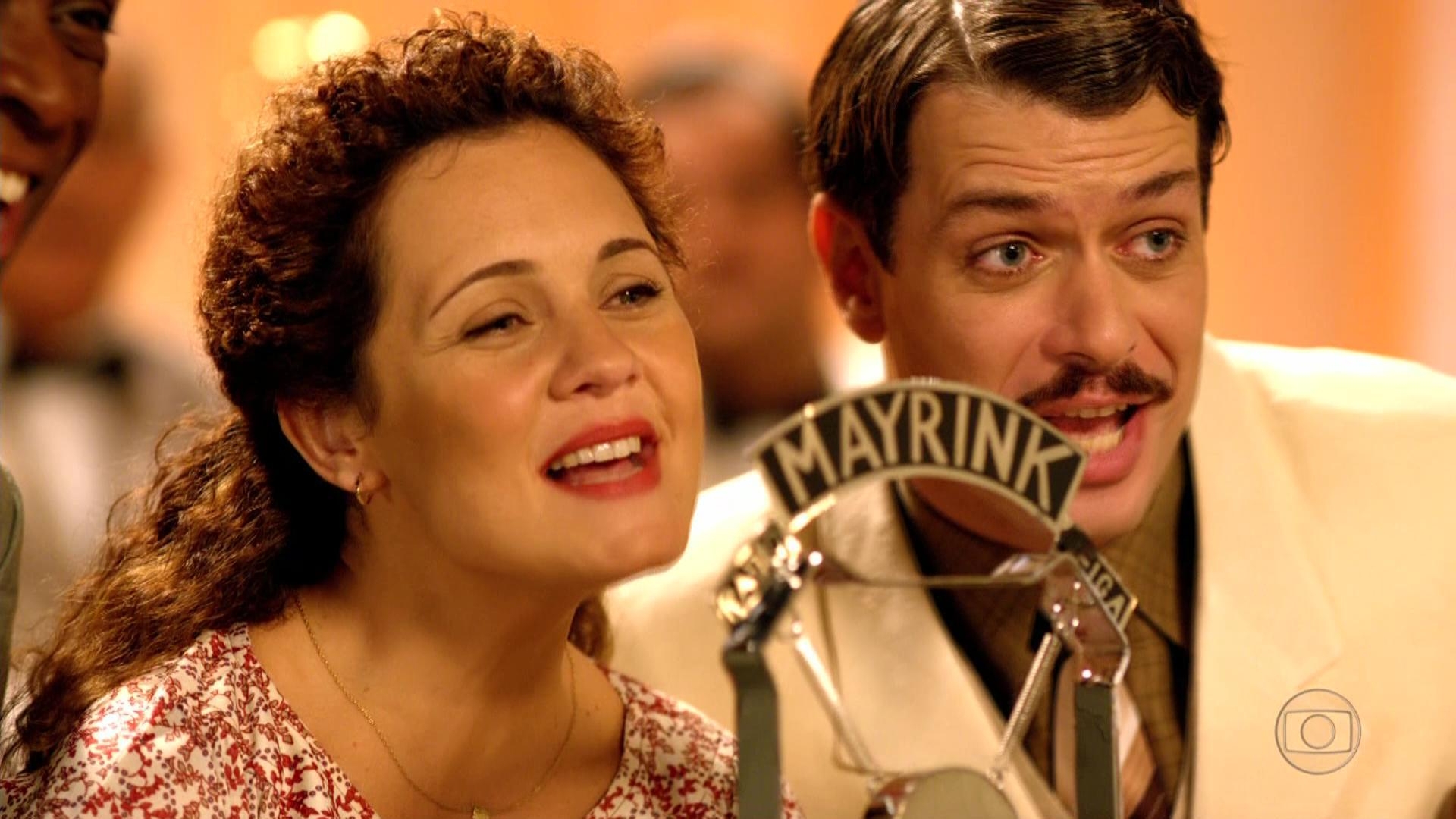the LipSync

Speech-language pathologist Marly Brito worked on Maria Adelaide Amaral and Dennis Carvalho’s TV series Dalva e Herivelto: uma Canção de Amor (Dalva and Herivelto: a Song of Love). As Dramaturgy Instructor, Marly focused on the actors’ interpretation of the songs. More specifically, the lip sync training during rehearsals and follow-up for the recording, both in the studio and outdoors.
Many of the actors, such as Fábio Assunção (Herivelto Martins), Maurício Xavier (Nilo Chagas), Fernando Eiras (Francisco Alves), Thiago Fragoso (Pery Ribeiro), Soraia Ravenle (Emilinha Borba), Claudia Netto (Linda Batista) and Pablo Bellini (Rick Valdez), recorded their songs in the studio to then dub in to the scenes. Adriana Esteves dubbed Dalva de Oliveira songs as well as Rita Elmor who played Marlene and Eduardo Moreno, as Orlando Silva.
Dubbing is the traditional method used in movies, but the lip sync technique is exactly the reverse process. When dubbing, the actor lends his voice to the sequence of images and can determine from them the exact dimension of emotion required. With lip syncing, however, the voice is the main element. The Dalva e Herivelto actors not only had to interpret through their gestures what they heard, but, at the same time, had to move their lips in exact sync with what was said or sung. The style needed to be respected, as well as the expressions and accents of the original vocal recordings. Note that some of the actors working over their own pre-recorded voice also required synchrony training. As well as the need to reproduce the same emotion used in the recording studio, the songs also enhanced vocal features from another decade.
Further, the pronunciation of phonemes, typical of Dalva de Oliveira’s accent, also required a lyrical decoupage. Adriana Esteves learned codes and signals to register all markings not only aurally, but also visually. Thus, the technique does not only involve phoneme, pronunciation and song research, but also the observation of breath (including interpretation breaks and taking in air) as well as the sonorous and buccal shape during vocal utterances. It was crucial that the recorded sound did not conflict with the buccal shape of the actors.


